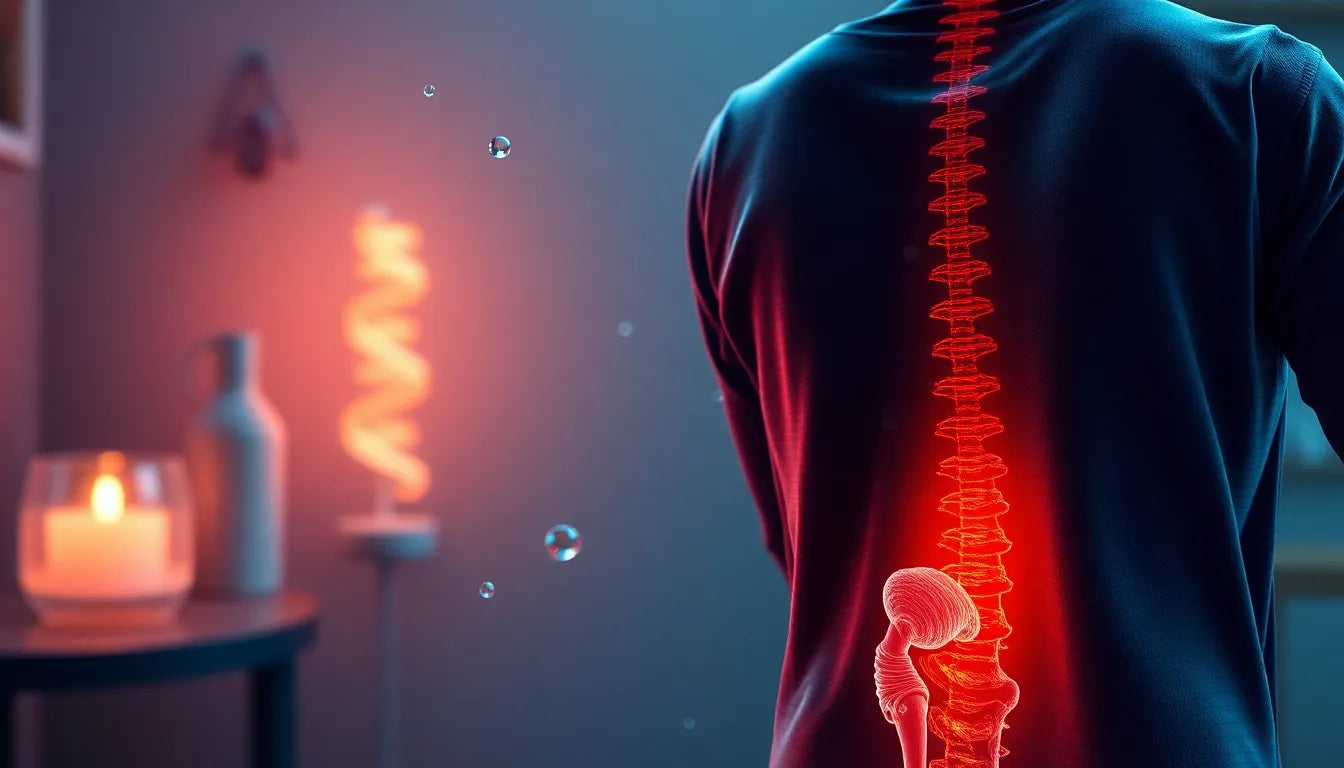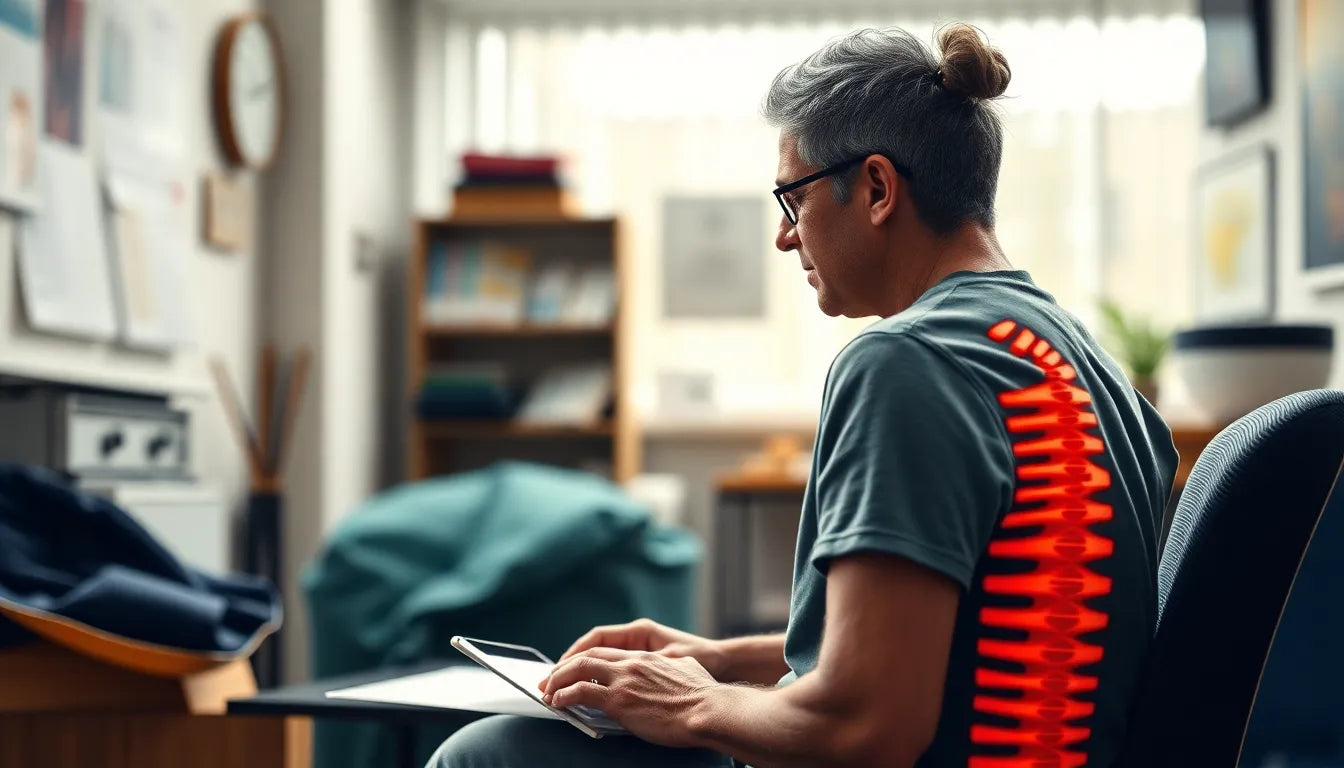Lower back pain is a common ailment that affects millions of people worldwide, often disrupting daily activities and diminishing quality of life. Among the various causes of this discomfort, a herniated disc is frequently identified as a significant contributor. This condition can severely impact mobility, making even simple tasks challenging.
understanding herniated discs
A herniated disc occurs when the inner core of a spinal disc, known as the nucleus pulposus, pushes through the outer layer, the annulus fibrosus. This protrusion can exert pressure on nearby nerves, leading to pain, numbness, or weakness, particularly in the lower back and legs. To grasp the implications of a herniated disc, it's essential to have a basic understanding of spinal anatomy.
The spine is composed of a series of bones called vertebrae, which are cushioned by discs. These discs act as shock absorbers, allowing for flexibility and movement. When a disc herniates, it often results from wear and tear or sudden injury, causing the gel-like center to escape through a tear in the disc's exterior. This can happen in any part of the spine but is most common in the lumbar region, which bears much of the body's weight and is subject to significant stress.
importance of understanding the condition
Recognizing the causes and symptoms of herniated discs is crucial for seeking timely and appropriate treatment. Early intervention can prevent further complications and help manage pain effectively. Ignoring symptoms or delaying treatment can lead to chronic pain and potentially more severe health issues, such as nerve damage.
By understanding what a herniated disc in the lower back entails, individuals can take proactive steps to alleviate discomfort and improve their overall well-being. This knowledge empowers patients to make informed decisions about their health, whether through lifestyle modifications, physical therapy, or other non-surgical treatments.
anatomy and process of herniation
The lumbar region of the spine is a common site for herniated discs due to its role in supporting the upper body's weight and allowing for a wide range of movements. This region consists of five vertebrae, labeled L1 through L5, which are separated by intervertebral discs. These discs serve as cushions, absorbing shock and facilitating movement. Each disc comprises a tough outer layer, the annulus fibrosus, and a soft, gel-like center, the nucleus pulposus. Herniation occurs when the nucleus pulposus pushes through a tear in the annulus fibrosus, often due to degeneration or sudden trauma, compressing nearby nerves and causing pain.
types of herniated discs
Herniated discs can vary depending on the location and direction of the protrusion. The most common type is the posterolateral herniation, where the disc bulges towards the side and back of the spine, often affecting the spinal nerves. Central herniation occurs when the disc protrudes directly backwards, potentially compressing the spinal cord. Lateral herniation involves the disc bulging to the side, which can also impinge on the nerve roots. Each type can cause different symptoms based on the specific nerves affected, highlighting the importance of accurate diagnosis and treatment.
symptoms and associated conditions
The symptoms of a herniated disc in the lower back can range from mild to severe, depending on the extent of nerve compression. Common symptoms include localized pain in the lower back, radiating pain down the legs, numbness, tingling, and muscle weakness. These symptoms often worsen with activities like bending, lifting, or sitting for extended periods. A herniated disc in the lumbar spine can also lead to conditions such as sciatica, characterized by sharp pain that travels along the sciatic nerve pathway, or radiculopathy, which involves nerve root irritation causing pain and neurological symptoms.
causes and risk factors
Several factors contribute to the development of herniated discs. Degenerative changes due to aging are a primary cause, as the discs lose water content and elasticity over time, making them more susceptible to tears. Improper lifting techniques, involving bending and twisting motions, can also precipitate herniation. Additionally, genetic predisposition plays a role, with some individuals more likely to experience disc degeneration. Risk factors such as obesity, sedentary lifestyle, and occupations requiring repetitive bending and heavy lifting further increase the likelihood of developing a herniated disc.
Understanding these underlying causes and risk factors is crucial for prevention and management. By adopting proper lifting techniques, maintaining a healthy weight, and engaging in regular physical activity, individuals can reduce their risk of experiencing a herniated disc. Moreover, recognizing early symptoms and seeking timely medical evaluation can lead to effective treatment and improved outcomes.
Treatment and management options for herniated discs
When it comes to managing a herniated disc in the lower back, non-surgical treatments are often the first line of defense. Physical therapy is a cornerstone of conservative management, focusing on exercises that strengthen the back muscles, improve flexibility, and reduce pressure on the spinal column. A physical therapist can tailor a program to address specific needs and limitations, promoting recovery and preventing future injuries.
Medications also play a crucial role in alleviating pain and inflammation associated with herniated discs. Over-the-counter pain relievers, such as ibuprofen or acetaminophen, can help manage mild discomfort. For more severe pain, a healthcare provider might prescribe stronger medications, including muscle relaxants or nerve pain medications. It's essential to use these medications as directed to avoid potential side effects.
Lifestyle modifications are another vital component of managing herniated disc symptoms. Maintaining a healthy weight reduces the strain on the spine, while regular low-impact exercises, like walking or swimming, can help keep the back muscles strong and flexible. Additionally, quitting smoking is recommended, as smoking can hinder the healing process and exacerbate disc degeneration.
The role of ergonomic aids
Ergonomic aids can significantly contribute to alleviating the discomfort associated with herniated discs. These aids are designed to promote proper posture and reduce strain on the spine during daily activities. For instance, ergonomic chairs and lumbar supports can provide the necessary back support while sitting, helping to maintain the natural curve of the spine. Adjustable desks and keyboard trays can also encourage a comfortable and healthy working posture, minimizing the risk of exacerbating symptoms.
By incorporating ergonomic aids into daily routines, individuals with herniated discs can create a more supportive environment that facilitates recovery and reduces the likelihood of further injury.
Frequently Asked Questions
What are the early signs of a herniated disc?
Initial symptoms of a herniated disc may include localized pain in the lower back, tingling, or numbness. These symptoms often arise suddenly and can worsen with specific movements or prolonged sitting.
Can a herniated disc heal on its own?
Many herniated discs improve over time with non-surgical treatment and lifestyle changes. The body's natural healing processes, combined with physical therapy and proper self-care, can lead to significant symptom relief.
What activities should be avoided with a herniated disc?
To prevent aggravating a herniated disc, it's advisable to avoid heavy lifting, twisting motions, and high-impact activities. These actions can increase pressure on the spine and exacerbate symptoms.
When should I see a doctor for a herniated disc?
It's essential to seek medical advice if you experience severe pain, weakness, or loss of bladder/bowel control. These symptoms may indicate a more serious condition requiring prompt medical attention.
Conclusion
Understanding herniated discs is key to managing symptoms effectively and improving quality of life. By exploring non-surgical treatments, utilizing ergonomic aids, and making informed lifestyle choices, individuals can alleviate discomfort and promote healing. Consulting healthcare professionals for personalized advice ensures that each person's unique needs are addressed, leading to better outcomes and enhanced well-being.


















